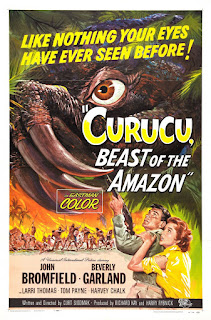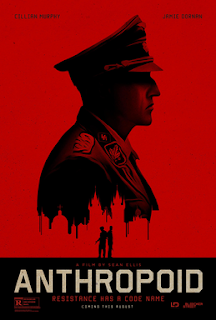Opening this weekend:
Don’t Breathe—It’s sort of like Wait Until Dark in reverse:
Three crooks are in a blind person’s home, but this time they’re the victims
and the blind person is the menace.
Like the 2014 chiller It Follows, this shocker is set in the
deserted economic wasteland of Detroit.
It follows a trio of attractive young burglars (Jane Levy, Dylan Minnette and
Daniel Zovatto) who learn of a blind guy living in the last occupied home in his
ghost-town neighborhood, and reportedly sitting on a fortune.
They get into the once-beautiful, now fortified house, and
discover that the man in question (Stephen Lang), an Iraq war veteran with,
apparently, some specialized training, may be sightless, but he isn’t helpless,
and has reasons beyond protecting his money to want them not to escape. They’re
soon fighting for their lives.
Directed by the Uruguayan Fede Alvarez from a script he
wrote with Rodo Sayagues, Don’t Breathe has some obligatory scenes early on
meant to make us sympathize with the robbers. From there, though, it gets off
to a sensational start—tense, atmospheric, simultaneously poignant and grimly
funny.
After a while, the strain of maintaining its rather narrow
central premise starts to show, but just as the complications are starting to
seem contrived, Alvarez and Sayagues throw us an unsavory, messed-up plot twist
that I didn’t see coming. And then,
just as that’s sunk in, they throw us an even more unsavory, more messed-up
plot twist that I really didn’t see
coming. How plausible it all is, I can’t say, but it’s nasty and wild and I, at
least, hadn’t seen it before.
Jane Levy are Dylan Minnette are likable (Zovatto is odious,
on purpose), but what elevates the film from mere skillful lurid thrills is
Stephen Lang. With only a few lines, spoken in a disused croak, and his craggy
face adorned in a regal halo of silver-gray hair, he brings a Shakespearean
bearing to this boogeyman part. The veteran Lang is a great actor who’s never
quite had a great movie role, but through sheer force of his presence he makes
this one come pretty close.
Opening in the Valley at Harkins Shea, and also available on
DirecTV:
Morris From America—
Markees Christmas plays the title role in this coming-of-age tale. He’s a 13-year-old
black kid from New York living with his
widowed dad (Craig Robinson) in Heidelberg,
Germany.
An aspiring rapper whose chubby
cheeks undercut his attempt at a badass scowl, Morris is a miserable stranger
in a strange land but, encouraged by his Dad, he gamely tries to make some
German friends, and catches the interest of a flirtatious blond (Lina Keller).
She probably honestly likes him well enough, but she really likes his potential
to upset her mother. She gets Morris into mischief, with his eager consent.
Simply and tightly written and
directed by Chad Hartigan, Morris From
America is one of the funnier and sweeter films I’ve seen this year. Christmas
makes an impressive movie debut as Morris, and he shows a nice rapport with
Carla Juri as his German tutor. But the standout performance is by Craig
Robinson as his Dad, trying to communicate with his kid, wanting him to
experience life while knowing full well that he’s having the sort of adventures
that terrify parents—trying, simply, to stay calm.
In the opening scene, the Dad, an
old-school rap nut himself, tells Morris that he’s grounded, on the charge of
“liking terrible music.” I wasn’t aware that this was a parental prerogative.
Good to know.






















